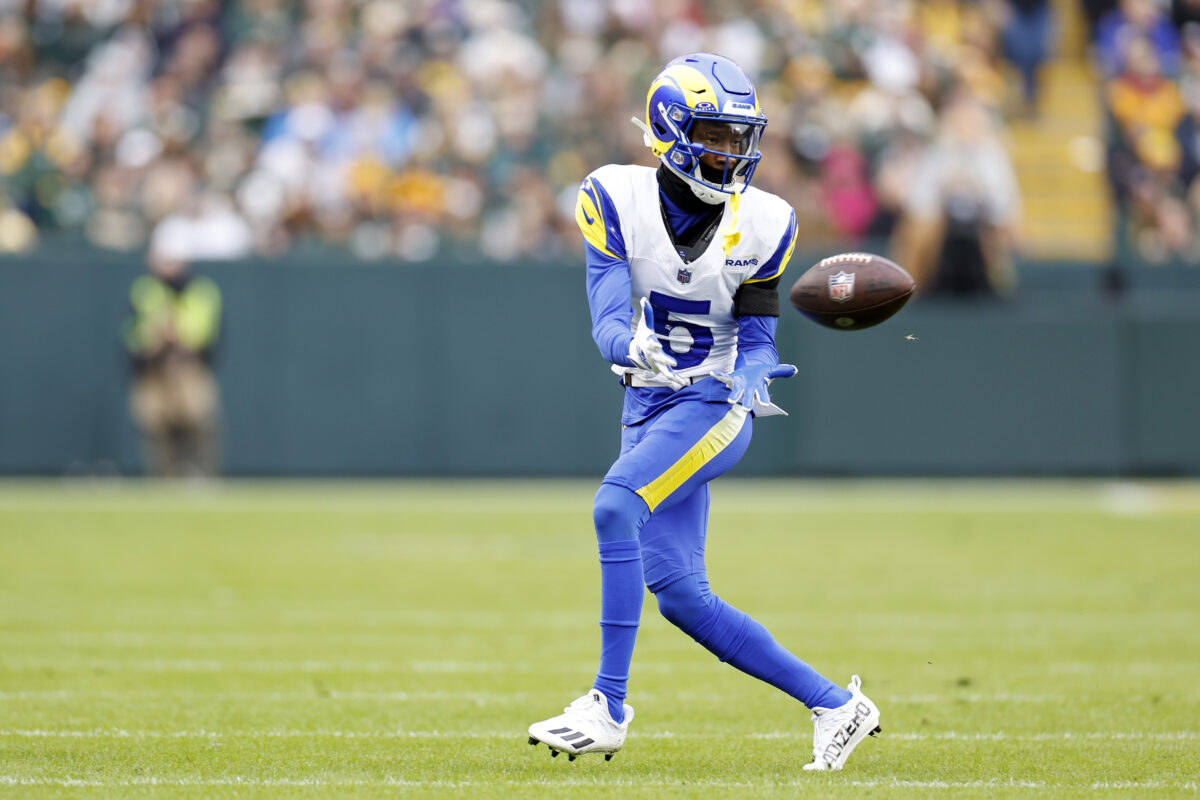The NFL is always changing, with new plays and innovations making their way into playbooks and schemes across the league each year. One trend that emerged last season was the use of “cheat motion.”
Made popular by the Miami Dolphins, cheat motion is essentially when a player goes in motion and just before the snap, he angles toward the line of scrimmage to almost get a running start. It was used often with Tyreek Hill and became a huge advantage for the Dolphins because of his speed against a stationary defender.
The Los Angeles Rams used it a bit with Tutu Atwell and even Puka Nacua, but that sneaky trick won’t be legal anymore. It’ll in fact be cheating. According to ProFootballTalk, the NFL added a line in the rulebook to prevent teams from using cheat motion.
Via PFT:
Here’s the key sentence, added by the NFL this year to Rule 7, Article 4, Section 2 of the official playing rules: “Any eligible backfield player who changes his stance does not have to come to a complete stop prior to the snap, as long as his actions are not abrupt (false start) or forward (illegal motion).”
Per a source with knowledge of the situation, that’s directly aimed at the split-second forward movement by players in motion. The Dolphins, the 49ers, and the Rams used it last year.
The Rams didn’t use it as often as the Dolphins and 49ers, but it was part of their playbook. It was particularly useful with Atwell, who has a lot of speed and could get up the field with a running start thanks to the cheat motion. The Rams even deployed it with Nacua on running plays where he would be a blocker in the backfield.
Here’s what McVay said about it last October when asked about the use of cheat motion.
“Yeah, I’ve seen some teams do that last year. Miami dabbled with it a little bit last year as well,” he said. “There’s just a lot of different ways to try to be able to change the picture and how that elicits a certain response that can create some challenging things depending upon the principles of the defense that you’re going against whether it’s creating access, whether it’s creating new counts in terms of some of the ways that you have to match up with your match principles coverage wise, or whether it creates favorable leverage based on the different routes. We’ve dabbled with that in some different games. We did it a couple times… variations of it a couple times yesterday, you could say. Certainly, those guys in Miami have done an outstanding job of it and I’ve seen it with a lot of these teams that like to utilize and implement motion pre-snap. That just creates a little bit of conflict and you’re kind of just changing that picture just before the snap is imminent for the defense.”
Cheat motion was a little wrinkle taken from the CFL where players are allowed to run full speed toward the line of scrimmage just before the snap.
McVay agreed that cheat motion is the closest the NFL has to the CFL’s pre-snap rules, admitting it gives the offense an advantage.
“Yeah, I think those and the jet motions, they’re all variations of fast motions that are going lateral as opposed to being able to attack the line of scrimmage because of the way that our game is officiated,” he said in October. “It does establish a certain amount of momentum that’s probably the closest thing to that. There’s nothing quite like a full speed towards the line of scrimmage sprint motion that those guys can do. It really creates some leverage and some momentum for you.”
Though there is now a rule preventing cheat motion, it’ll be fascinating to see how often officials actually flag the play for being illegal.
Update: According to Jourdan Rodrigue of The Athletic, cheat motion is actually still legal. McVay said Thursday that the rule remains as-is in response to PFT’s report.
“When we’ve talked about this at the league meetings and (with) the competition committee, it’s same-as,” he said. “There might be a nuance in the way that it is written in terms of a receiver going from a two-point (stance) to a three-point (stance). Unless we’re back to the ’60s, I have not seen that.
“As far as the ways the motions pre-snap will be officiated, it’ll be same-as.”
